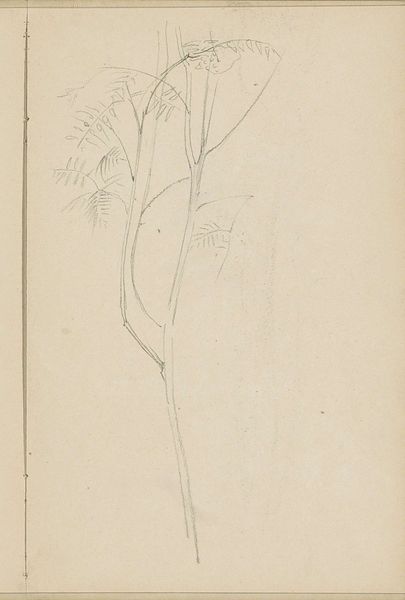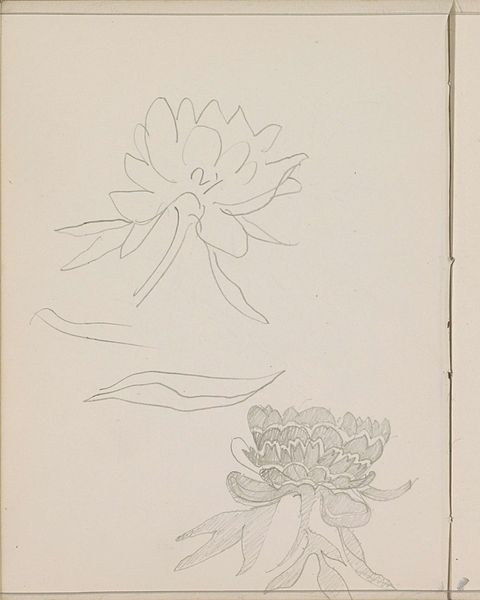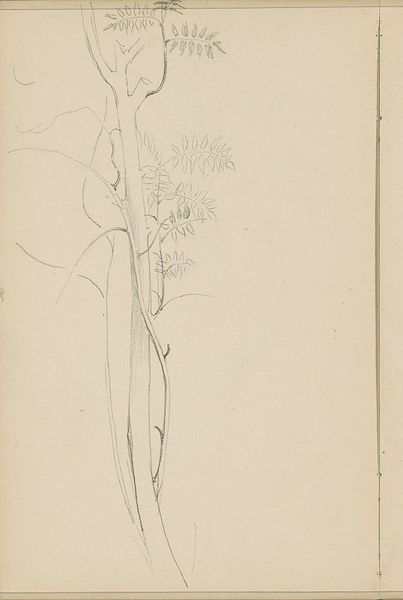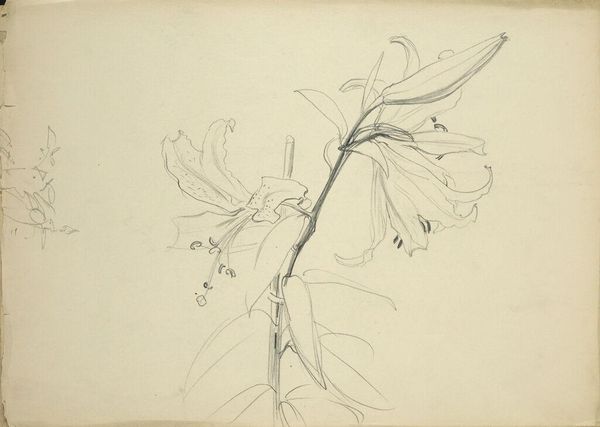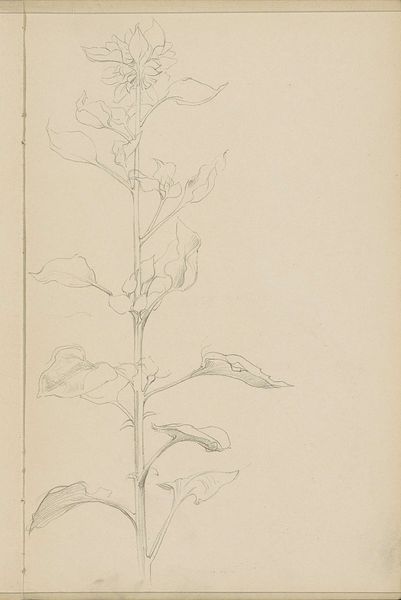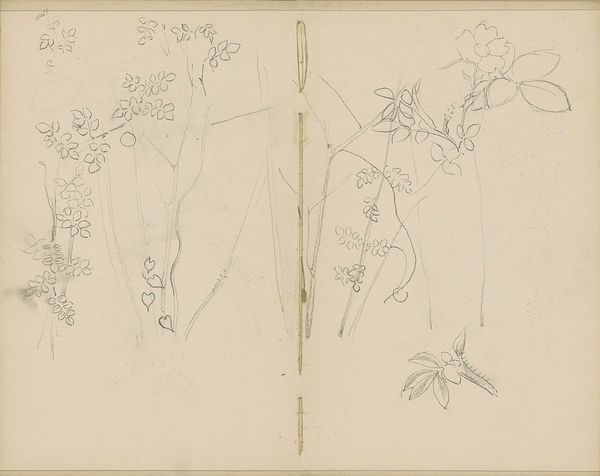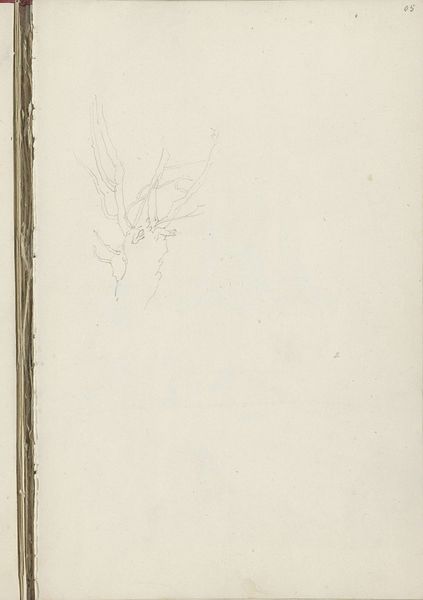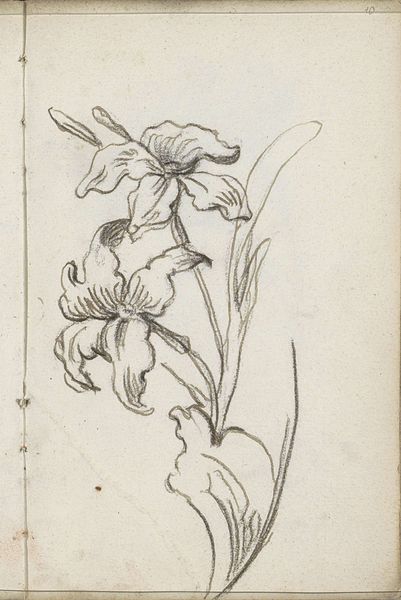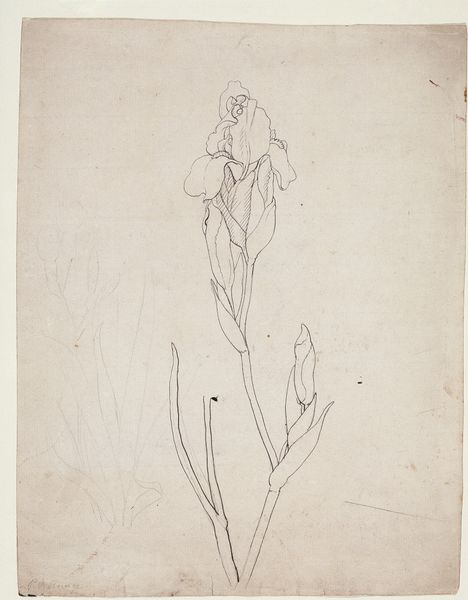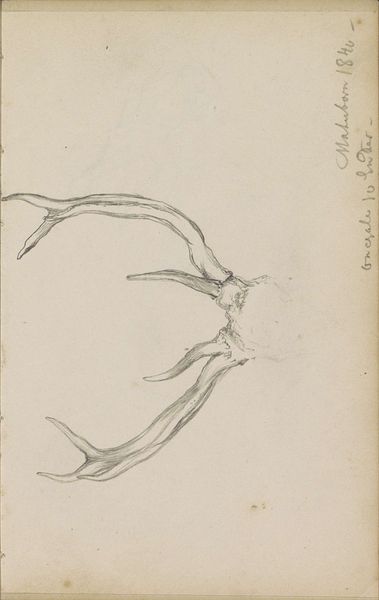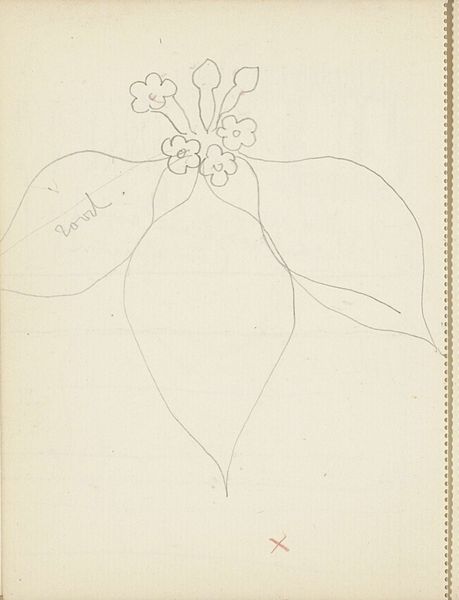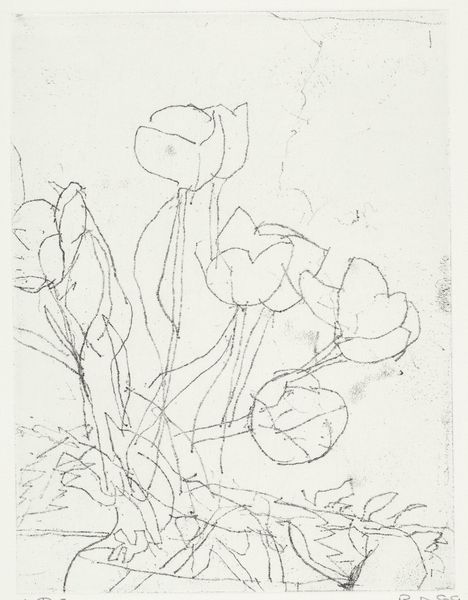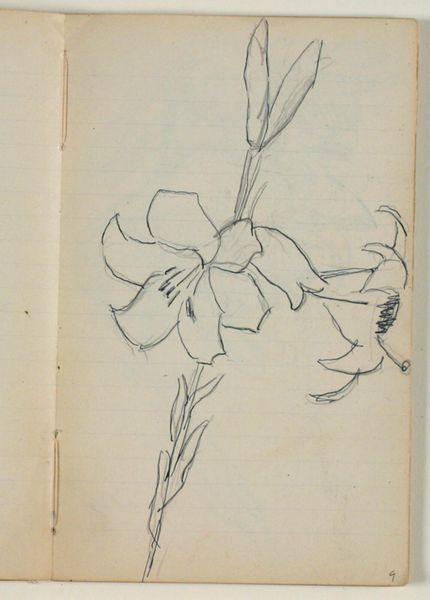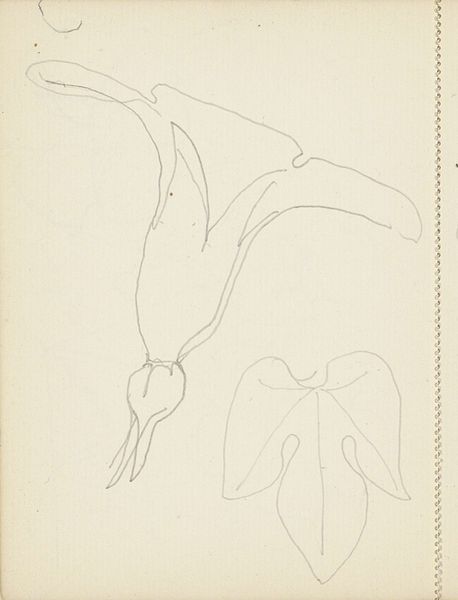
Copyright: Rijks Museum: Open Domain
Curator: Here we have “Plant met bladeren,” a drawing executed in pencil on paper by Antoon Derkinderen, likely dating from between 1889 and 1894. Editor: It’s delicate, almost hesitant. The lines are so light, the whole composition feels like a fleeting thought captured on paper. Curator: Exactly. Observe how Derkinderen employs a restrained line, focusing purely on contour to suggest form. The leaves are merely outlined, allowing the viewer's eye to complete the shapes. Editor: There's a simplicity that transcends mere botanical illustration. Was sketching of flora a common practice for artists at that time, reflecting perhaps the influence of burgeoning botanical sciences? Curator: Sketches of this kind provided raw material for larger, more resolved works, yes. Consider this as part of Derkinderen’s artistic process; a tool to contemplate the essential form of the plant, exploring ideas of structure and growth. Editor: It also prompts us to reflect on art institutions. Are museums places to store incomplete thoughts as valuable pieces? Does the aura of display elevate what would normally be a discarded sketch into a significant artwork? Curator: The 'finish' is immaterial here, I think. This is art that privileges observation. The unfinished quality allows us to enter the artist's mind, experiencing their immediate perception of the natural world. Editor: Perhaps. It makes me consider how sketching served as an accessible artistic activity for people from different social classes and how museums influence that practice through display and valorization. Curator: Regardless, “Plant met bladeren” showcases Derkinderen's ability to distill form to its purest essence, to appreciate the intrinsic beauty of the plant’s skeletal structure through basic components: lines, their direction, their varying weights, and the negative space in-between. Editor: So it does. Its raw simplicity definitely brings focus to the practice of visual learning and recording, emphasizing the democratization of botanical drawing as artistic inquiry in a socio-political dimension. Curator: Indeed. It provides a window into the fundamentals of artistic vision. Editor: A brief yet pertinent reminder of that moment's cultural practice.
Comments
No comments
Be the first to comment and join the conversation on the ultimate creative platform.
